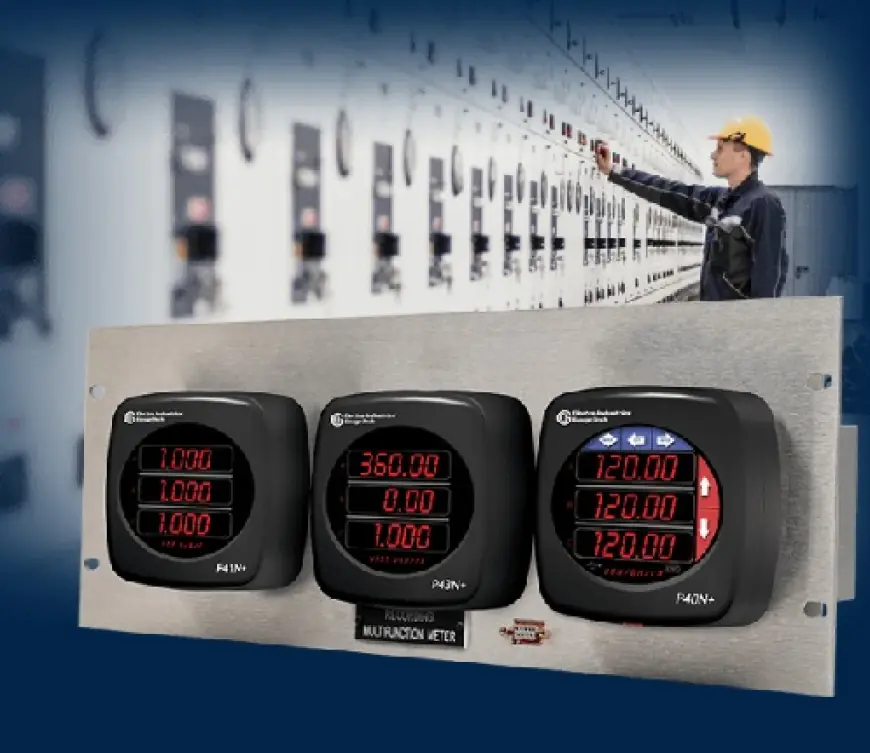The Role of Synchrophasors in Modern Power Systems

In the ever-evolving landscape of power systems, real-time monitoring and precise data analysis are crucial for maintaining reliability, efficiency, and stability. As global energy demand continues to grow and grids become increasingly complex with the integration of renewable sources, traditional monitoring tools no longer suffice. This is where Synchrophasors have emerged as game-changers. These advanced measurement tools are redefining how utility providers manage and optimize grid performance, especially when integrated with devices like the Power Energy Meter.
What Are Synchrophasors?
Synchrophasors, also known as Phasor Measurement Units (PMUs), are sophisticated devices that measure the electrical waves on an electricity grid using a common time source. They collect real-time data on voltage and current waveforms, providing precise phase angle information. This high-speed, synchronized data offers a much clearer picture of what’s happening in the power grid at any given moment, enabling operators to detect anomalies and potential failures before they escalate.
Traditional SCADA systems typically sample data every few seconds. In contrast, Synchrophasors can sample data up to 60 times per second, offering a granular and time-synchronized view of system behavior across geographically dispersed points in the grid. This capability is essential for managing the modern, decentralized grid system powered by both conventional and renewable energy sources.
Importance of Synchrophasors in Grid Management
The real-time visibility offered by Synchrophasors enhances grid situational awareness, allowing for quick identification of disturbances, faults, and imbalances. For instance, during sudden fluctuations in load or frequency, synchrophasor data helps operators implement corrective actions like load shedding or rerouting electricity.
With grids increasingly incorporating solar and wind energy, variability and unpredictability have become challenges. Synchrophasors play a critical role in addressing these challenges by monitoring voltage stability, power swings, and dynamic conditions in near real-time. Their contribution to event analysis and post-disturbance review is invaluable, especially in preventing blackouts and maintaining service reliability.
Integration with Power Energy Meters
While Power Energy Meters provide essential data on energy consumption, demand, power factor, and other load characteristics, integrating them with Synchrophasors elevates the quality of grid analytics. Together, they provide both consumption data and dynamic grid status, allowing for smarter energy management strategies.
The Power Energy Meter excels in metering and billing, while Synchrophasors specialize in monitoring the operational state of the network. This combination ensures that both operational and financial performance are optimized. For example, utilities can use synchrophasor data to manage peak demand and voltage profiles, while energy meters track the cost implications of those decisions.
Moreover, when these tools are used in tandem, utility companies gain the ability to detect issues like power quality disturbances or harmonic distortions that might not be visible through energy meters alone. This hybrid approach ensures grid operators are better equipped to forecast, plan, and make data-driven decisions.
Enhancing Grid Resilience and Security
As cyber threats to critical infrastructure grow, maintaining the integrity and security of power systems is paramount. Synchrophasors help detect and localize cyber intrusions by monitoring data patterns and comparing them with expected operational behavior. Any deviations can be flagged instantly, allowing for proactive cybersecurity measures.
Additionally, Synchrophasors contribute to physical grid resilience by offering predictive maintenance insights. Their high-resolution monitoring can detect early warning signs of equipment degradation, such as transformer overloads or generator instabilities. Utilities can then schedule maintenance before a failure occurs, thereby extending the lifespan of grid assets and reducing downtime.
Role in Renewable Energy Integration
The global shift toward clean energy sources has created both opportunities and complexities for grid management. Wind and solar power, while sustainable, are intermittent by nature. Synchrophasors help manage this variability by providing accurate, time-aligned data that supports real-time adjustments in power flow and system configuration.
They enable utilities to assess how renewable sources impact grid frequency and voltage, which are critical parameters for maintaining system stability. With the help of synchrophasor data, grid operators can better forecast renewable generation, coordinate distributed energy resources (DERs), and reduce the need for expensive reserve capacity.
Advancing Smart Grid Capabilities
Smart grids rely heavily on the seamless exchange of information and adaptive control mechanisms. Synchrophasors are vital to this ecosystem, enabling features such as automated fault detection, self-healing networks, and demand response.
These devices support wide-area monitoring systems (WAMS) that collect data across multiple substations, providing operators with a comprehensive view of the grid. When combined with intelligent analytics and machine learning algorithms, this data can uncover patterns and trends that inform better decision-making.
The inclusion of Power Energy Meters in this architecture further enriches the data environment. With both energy usage and operational metrics at their fingertips, utilities can implement dynamic pricing models, encourage energy conservation, and optimize load balancing strategies.
Real-World Applications
Utilities across the globe are already leveraging synchrophasor technology to great effect. In the U.S., the Department of Energy’s Synchrophasor Program has significantly improved grid reliability by deploying thousands of PMUs across key transmission points. India, China, and parts of Europe have also embraced this technology to manage expanding grid networks and integrate large-scale renewables.
Power plant operators, too, use Synchrophasors for stability assessments, black start planning, and interconnection studies. Transmission system operators rely on them for oscillation detection, load modeling, and reactive power compensation planning.
Meanwhile, Power Energy Meters continue to be indispensable at the user-end, offering precise energy billing and usage insights that support efficient power distribution and conservation initiatives.
Conclusion
As power systems become more complex and demand for reliability intensifies, the integration of advanced monitoring tools becomes essential. Synchrophasors stand out as transformative assets, enabling real-time, synchronized visibility into grid operations. When coupled with the capabilities of a Power Energy Meter, utilities are better equipped to optimize both performance and efficiency.
For utility providers and industrial facilities looking to modernize their energy infrastructure, embracing these technologies is no longer optional—it’s a strategic necessity. Companies like Electro Industries Gauge Tech are at the forefront of delivering cutting-edge solutions that combine the power of Synchrophasors and energy metering to support a smarter, more resilient grid. With their expertise and innovation, the future of energy management is both dynamic and secure.
What's Your Reaction?
 Like
0
Like
0
 Dislike
0
Dislike
0
 Love
0
Love
0
 Funny
0
Funny
0
 Angry
0
Angry
0
 Sad
0
Sad
0
 Wow
0
Wow
0




















































